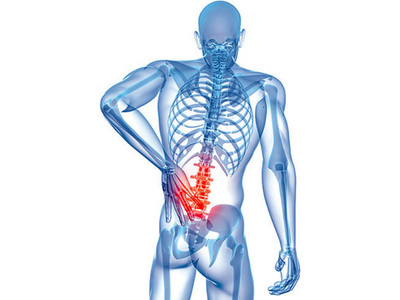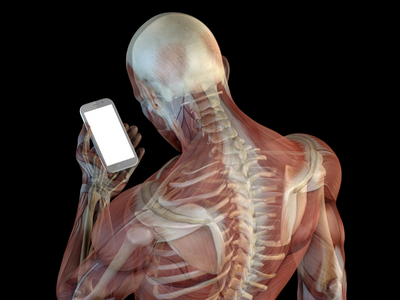Pain in front portion of the knee, in and around the knee cap (Patella) is known as Anterior Knee Pain. This is a broad term which includes number of diagnosis like Patello Femoral Pain Syndrome (PFPS) and patellar tendinopathy. As per research around 20-40% knee injuires are reported in this area while playing any kind of sports.
Distinguishing between PFPS and Patellar Tendinopathy as a cause of front knee pain
can be tricky as their signs and symptoms are almost similar and required clinical experience
ANATOMY OF THE KNEE CAP:-
The bones of the knee and the leg include the femur, which is the large thigh bone; the tibia and fibula, which are the leg bones between the knee and ankle; and the patella, which is known as the kneecap.
The patella is lined with cartilage which is actually the thickest cartilage in the whole body due to the massive forces that go through it e.g. the force going through the kneecap when coming downstairs is 3.5x bodyweight.
The quadriceps muscles are placed in front of the thigh which controls the patella movement. They insert on the shin bone as patella tendon which acts as a pulley in directing the direction of forces on the patella.
The most important function of the patella is its role in facilitating the extension of the knee by increasing the efficacy of the quadriceps muscle.
how does it move on the knee?
The knee cap , when your leg is straight sits on the outer part of the knee. When the knee is extended, the tightened quadriceps pulls the patella upwards until the upper border reaches beyond the femoral trochlea groove As the knee starts bending , the knee cap moves horizontally inwards. 
Because its shape is triangular on the inside where the cartilage is and the space wher it sits is also a triangular sort of cave, it can move from out to in every time you bend you knee.
The Quadriceps mainly control this side to side & up and down movement of the patella. If we try to go in details quadriceps is a set of 4 muscles, of the these there is Vastus medialis muscle (VM) on the innerside fo the thigh and, Vastus lateralis muscle (VL) on the outer side of the thigh. 
For the knee cap to smoothly move from side to side, both these muscles need to have a balance of strength and flexibility which could be another reason for your PFPS. Another fact is the muscle on the outer side that is vastus lateralis is anatomically stronger than the inner one and hence the chances of imbalance are frequent.
How much weight does it take?
When you are walking it take around 0.5kgs of weight, while jogging the weight is around 7-8 times your body weight. How does it affect your knee pain is the question.
If you look at the picture showing arrows where the force is directed on the knee cap when moving it shows that the knee cap is under maximal pressure when you knee is bent up till 90 degrees. Hence it is common to experience pain while doing activities where knee is bent when you have PFPS.
Gender differences
Women have smaller knees and hence shorter patellar tendon moment arms than men. Subsequently the PRF increases by up to 20% for the same knee extending moment which would explain the somewhat higher frequency of patello-femoral disorders in females.
SIGNS AND SYMPTOMS:-
- Although it may be difficult for the patient with anterior knee pain to be specific, the area of pain often gives an important clue as

fat pad impingement to which structure is contributing to the pain. For example, pain at the back of patella (knee cap) suggests PFPS, while pain at the lower tip of the knee cap suggests pinching of the fat pad present in that area.
- The type of activity could also hint onto the diagnosis like for example activities a sports person complaining of pain at the knee cap who is involved in repetitive jumping like basketball, volleyball usually load the patella tendon, so it could be more of a tendinopathy while the same person who has been running could be more of a PFPS. Hence it is important for the patient to describe his activities or sport in detail.
- How the pain started is also important. The pain for PFPS usually has a unnoticed episode of knee pain earlier like falling on the knees, previous knee ligament injury or post surgery, recurrent ankle sprains etc
- The pain usually get worst on loading the knee like climbing, walking, running or for regular people it could also get worst with sitting for a long time.
- Another differentiating feature is usually the pain reduces after warm up and returns after the body cools down in athletes then it’s the tendon which troubled and not the knee cap
- Recurrent crepitus is suggestive PFPS but the knee cap moving too much out of position could be more of an instability issue
- Another common symptom is giving way of the knee, but that could be due to PFPS or acl injury, meniscal injury, patella dislocation. So its an important sign but needs further understanding clinically.
- Last but not the least, PFPS usually the swelling is more on one corner of front of the knee, but a fully swollen knee could suggest more of a knee joint problem. However both could co-exist together.
THE KINEMATIC CHAIN AND THE RELATION BETWEEN CORE/HIP/KNEE STABILITY:-
From a sports physio point of view, we look at the biomechanical causes of your knee pain. Most of the research has indicated that stability at the hip and knee are inter-related and that a weakness/tightness in hip or back muscles could indirectly influence you knee pain. Hence most of the rehab protocols focus on improving the hip and back/core strength along with knee.
The other reason to do this is that our body musculoskeletal structure actually functions in kinematic chains which helps us perform these complex movements. So it would be logically sound to work on the chain than just the area of the pain.
For example:- have you heard about this structure called IT band. Its pretty famous with the fitness and sports guys with information. Now most of the times if you have been diagnosed PFPS your health care provider may work on the IT band along with the knee, but if you approach this problem from the kinematic chain theory it could reveal a weakness/tightness anywhere in the chain. It may be your foot or hip/ spine or the IT band. Hence evaluating this pain functionally leads to solution of the problem to the core and not just on the top.
MANAGEMENT OF PFPS:-
Usually the treatment is based on following principals:-
- Reduce pain
- Restore mobility and stability
- Correct biomechanics
References
- Anterior knee pain: clinical Sports medicine- peter Brukner and karim khan (3rd edition)
- Basic kinematics and biomechanics of the patello-femoral joint. Part 1: The native patella.
- Oliver S. Schindler, William N Scott
- Published 2011 in Acta orthopaedica Belgica
- https://www.semanticscholar.org/paper/Basic-kinematics-and-biomechanics-of-the-joint.-1%3A-Schindler-Scott/477b76e5860204ec747c5ea87c34e9e6633fa793








